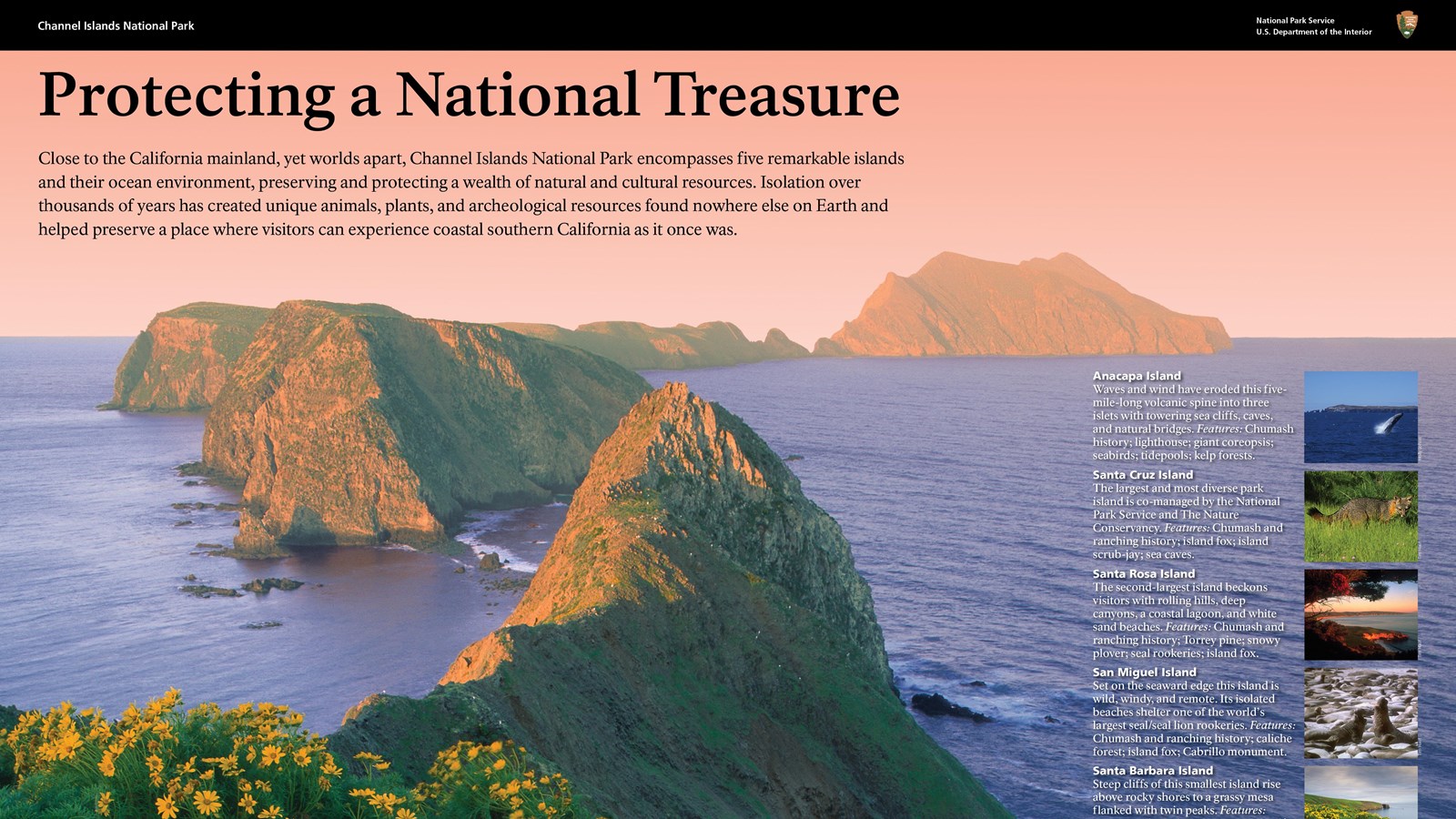Last updated: May 7, 2021
Place
Sign: Protecting a National Treasure

Information
Close to the California mainland, yet worlds apart, Channel Islands National Park encompasses five remarkable islands and their ocean environment, preserving and protecting a wealth of natural and cultural resources. Isolation over thousands of years has created unique animals, plants, and archeological resources found nowhere else on Earth and helped preserve a place where visitors can experience coastal southern California as it once was.
Anacapa Island
Waves and wind have eroded this five-mile-long volcanic spine into three islets with towering sea cliffs, caves, and natural bridges. Features: Chumash history; lighthouse; giant coreopsis; seabirds; tidepools; kelp forests.
Santa Cruz Island
The largest and most diverse park island is co-managed by the National Park Service and The Nature Conservancy. Features: Chumash and ranching history; island fox; island scrub-jay; sea caves.
Santa Rosa Island
The second-largest island beckons visitors with rolling hills, deep canyons, a coastal lagoon, and white sand beaches. Features: Chumash and ranching history; Torrey pine; snowy plover; seal rookeries; island fox.
San Miguel Island
Set on the seaward edge this island is wild, windy, and remote. Its isolated beaches shelter one of the world's largest seal/seal lion rookeries. Features: Chumash and ranching history; caliche forest; island fox; Cabrillo monument.
Santa Barbara Island
Steep cliffs of this smallest island rise above rocky shores to a grassy mesa flanked with twin peaks. Features: Tongva and ranching history; seabird/seal rookeries; island night lizard; kelp forests; wildflowers.
